#coastal ecosystems
Explore tagged Tumblr posts
Text
Humans are often inclined to build seawalls to protect coastal communities from encroaching oceans, but those require constant, expensive maintenance. And in fact, the way we’re changing land, rivers, and climate—and even the seawalls themselves—are undermining natural protections, such as tidal marshes, barrier islands, coral reefs, seagrass beds, dunes, gravel beaches, and kelp and mangrove forests. If left intact, these natural communities can slow fresh and tidal water, acting as a buffer, providing flexible and resilient protection for human communities. They provide multiple co-benefits, and even have the ability to sustain themselves. With these abilities, they can reduce by half the number of lives and properties at risk from storm surges and sea-level rise, according to a study in Nature Climate Change. Unlike seawalls, tidal marshes have a superpower against sea-level rise. It’s not just that they are a buffer between the water and human infrastructure, sapping energy from storm surges and blocking the highest tides. Marshes can actually grow vertically, keeping pace with sea-level rise by trapping sediment in their vegetation, which decomposes and then regrows. To perform this trick, they need three ingredients: sediment, space, and time.
[...]
Broadly speaking, human development has erased many of water’s slow phases—floodplains, meadows, forests, and wetlands, such as tidal marshes. For example, humans have eradicated 87 percent of the world’s wetlands. What water wants, say the detectives, is a return of these slow phases, an approach I think of as the “Slow Water Movement.” Slow water approaches are unique to each place, work with local systems, are distributed rather than centralized, are socially just, and empower and engage the local community. They also provide multiple benefits beyond buffering us from flood and drought, including carbon storage and homes for threatened plants and animals.
29 November 2022
200 notes
·
View notes
Link
2 notes
·
View notes
Text
Dependable Green
Ælfhild Astrædottir
This poem was first published, today, in Salish Magazine, a free online magazine that publishes articles and artwork exploring Salish Sea ecosystems. This is my contribution. I encourage interested parties to follow the link and peruse the rest of the magazine. You can listen to me read my poem on the magazine site. It's my first time being published in a magazine: cheers!
Green is the call sign of summer
When chlorophyll works overtime
Gathering in wavelengths of reds and blues
Spinning those threads of sunshine,
Faithfully fueling the Plant Kingdom
(And dowager queen cyanobacteria besides)
From darling Mnium spinulosum moss
To gracefully sweeping hemlocks where they abide,
In summer the forests are painted with a thousand shades
Of vivacious, variegated, verdure
From sun touched madrone leaves
To shadowed webs of twinflower,
Then comes autumn the season of change
The deciduous leaves layoff their chlorophyll
Indulging in bright yellows and bold reds
Before they too are cast off and still,
Oh, but those stalwart evergreens
They hold tight to their chlorophyll yet
They weather autumn storms with their leaves intact
Sheltering their animal neighbors from the wet,
Then comes winter and the forests fill with skeletons
Tangled thickets of bare shrubs and barer trees
Ah, but the evergreens fill in their spaces
Vibrant life of red cedar and pacific rhodys,
When the deer are scrounging for tidbits
When the songbirds need a break from the cold
When the underground is limping by on reserves
Evergreen offerings are more precious than gold,
All winter the conifers tall and proud
Stand guard on our bluffs, our hills and our vales
A mosaic of malachite holding together our forests
Buffering all from the fiercest winter gales,
Then comes spring and the sweet sap rises
Buds unfurl tender leaves and pollen fills the air
And amidst all this new life and color
The valiant evergreens are still green and still there.
© Ælfhild Astrædottir 2023
#Ælfhild Astrædottir#poetry#original poetry#evergreens#Salish Magazine#Salish Sea#conifers#pnw#pnw poetry#pacific northwest#forests#coastal ecosystems#tumblr poets#tumblr authors#magazine#first magazine contribution#yay
3 notes
·
View notes
Text
youtube
The Arctic Tern's Epic Journey
Ever wondered which bird travels the furthest? The Arctic Tern migrates an astonishing 70,900 kilometers each year! Discover this natural marvel.
Check out my other videos here: Animal Kingdom Animal Facts Animal Education
#Helpful Tips#Wild Wow Facts#Arctic Tern#bird migration#epic journey#wildlife documentary#nature film#animal behavior#migratory birds#environmental conservation#bird watching#avian life#Arctic wildlife#adventure travel#global migration#nature's wonders#ecosystems#seabirds#flight patterns#educational content#wildlife photography#ornithology#natural history#coastal ecosystems#biodiversity#Tern species#youtube#animal science#fun animal facts#animal habitats
1 note
·
View note
Text

This diagram illustrates how marshes can adapt to rising sea levels and naturally "migrate" upland if given enough space. Credit: Julie Rossman/Audubon
Excerpt from this story from the Audubon Society:
For over 40 years, the Coastal Barrier Resources Act has been a little-known bipartisan environmental law—quietly protecting critical bird habitat, providing coastal communities with a natural buffer against storms and sea-level rise, and saving taxpayers billions of dollars, all while staying under the radar. Audubon has long been a champion of this law, and now we have reason to celebrate! Last week, President Biden signed the Bolstering Ecosystems Against Coastal Harm (BEACH) Act, updating the Coastal Barrier Resources Act and expanding its protected system of coastal areas that buffers people and birds from flooding on our coasts.
Congress passed the BEACH Act with overwhelming bipartisan support just last month, adding nearly 300,000 acres of wetlands and beaches to the Coastal Barrier Resources Act (CBRA) system, codifying its largest expansion since 1990. For years, Audubon has worked with a diverse coalition of partner organizations, multiple presidential administrations, and legislators on both sides of the aisle to massively expand the CBRA system, and the sweeping success of this bill is one of our most exciting accomplishments for the coast.
Created in 1982, the CBRA protects coastal habitat and property while saving lives and federal taxpayer dollars in a distinctive way. Undeveloped beaches and coastal wetlands around our country provide vital habitat for birds and wildlife, especially in the face of climate change impacts such as sea-level rise and increased storm frequency and intensity. These coastal areas are also particularly prone to those climate impacts, endangering lives, property, and vulnerable species. The CBRA discourages development in these hazard-prone areas by removing most federal spending, including flood insurance, disaster recovery grants, and other federal expenditures on the CBRA’s system of protected areas. This market-based approach is working. A recent study demonstrates this in its finding that CBRA is highly effective at achieving its intended goals—reducing development by 85 percent compared to nearby areas, reducing flood damage by 25 percent, and adding ecologically important layers of protection to coastal areas.
Currently, CBRA protects 3.5 million acres on the coasts of the Atlantic, Gulf of Mexico, Great Lakes, Puerto Rico, and the U.S. Virgin Islands. These largely undeveloped areas are an ideal habitat for birds like American Oystercatchers and Piping Plovers to nest and rest well away from any human disturbance. Intact coastal beaches and wetlands like this also serve as a natural buffer for nearby communities from storms and sea-level rise. Beach dunes act as speed bumps to slow down wind and waves, and marshes act as sponges soaking up floodwaters.
1K notes
·
View notes
Text
Malibu Sand Dunes
Nestled along the picturesque coastline of Malibu, the Malibu Sand Dunes stand as a captivating natural wonder, offering a unique blend of rugged beauty and coastal tranquility. These magnificent dunes, sculpted over time by the gentle caress of the Pacific winds, create a mesmerizing landscape that tells tales of nature’s artistic prowess. Rising in undulating patterns, the dunes present a study…
View On WordPress
#Beach conservation#Beach habitats#California beaches#Coastal conservation#Coastal ecosystems#Coastal geography#Coastal landscapes#Coastal management#Coastal preservation#Coastal tourism#Dune ecology#Dune plants#Dune restoration#Dune stabilization#Environmental preservation#Erosion control#Malibu#Malibu attractions#Malibu coastline#Natural beauty#Nature reserves#Public recreation#Sand dunes#Sand formation#Sandy landscapes
0 notes
Text
Some People think there is no water here

Some People think that this place is dry

Because there is no river for them to drink

But each morning, a river flows uphill

A river of moisture

A river of fog

Enough to get by

If you’re from around here

And you know how to drink from the air

#Druid life#troglodyte thoughts#free range sustainable shitpost#lichen#coastal fog ecosystem#all the myriad ways#cactus#ocotillo#buckwheat#that which appears dead is merely dormant#awaiting the cleansing fire#so that it may erupt#renewed
1K notes
·
View notes
Text
I do not regret going to grad school, and I do not regret moving for my program, but I am absolutely sick and tired of living in the fucking desert
It should not be 97° F in fucking May
I wish we still had our chest freezer so I could curl up inside it and take a nap
#personal#the sooner i can move back to the pnw the better#didn't think i would miss the rain but i was wrong#and i *desperately* miss the comfortable temps#97° in may. i'm almost offended#to be clear: deserts are a beautiful complex and thriving ecosystem with their own unique beauty and charms#however i am a coastal forest creature who's lived in a temperate rainforest for most of my life and i was not meant for this climate#i miss trees :(#i miss summer being a month or two long instead of 3/4 of the year#fingers crossed we can renew our lease for 6 months rather than a full year so we can move back in march instead of next august
15 notes
·
View notes
Text
New old species and sustainable fishing techniques
The idea is that sustainably caught fish should be prioritised for local consumption. Guldhaven processes the ide once they have been landed, ensuring that the entire fish is used. Ide is a bony fish, so Gutefisk worked in partnership with a local chef to develop a fish burger made from ide that allows more of the fish to be used. Gutefisk then collaborated with Guldhaven to help produce the burgers.
Identifying new species and promoting sustainable fishing were important parts of the strategy.
In each case the aim was to help the local fishery while taking pressure off stocks of cod, salmon and herring.
The Pike and Garfish Network set out to re-launch an old tradition, the Gotland “Fish Day”, and to make garfish more popular with consumers. The organisers worked with Estonia to find inspiration from that country’s well-known Pike Festival. Activities included showing children how to catch garfish as part of a day at the beach, and local sport fishers teamed up to organise fishing trips by boat.
#solarpunk#solar punk#indigenous knowledge#jua kali solarpunk#community#informal economy#coastal fishers#sweden#renewal#sustainable#ecological#transformation of the ecosystem#fishers#HKS#cultural interface
11 notes
·
View notes
Text



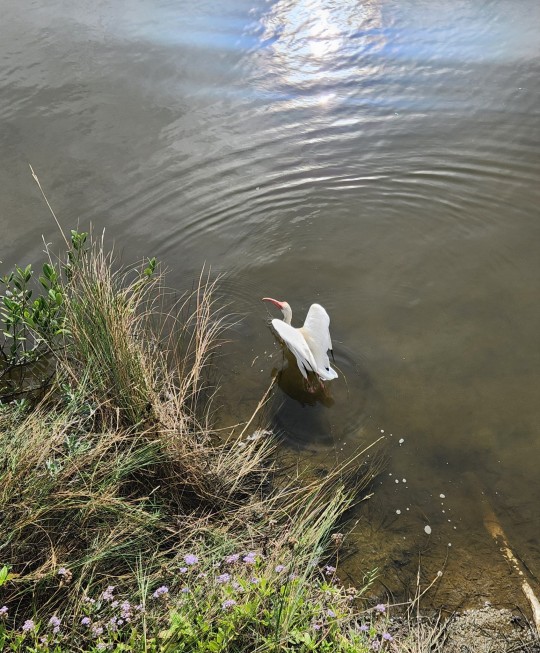

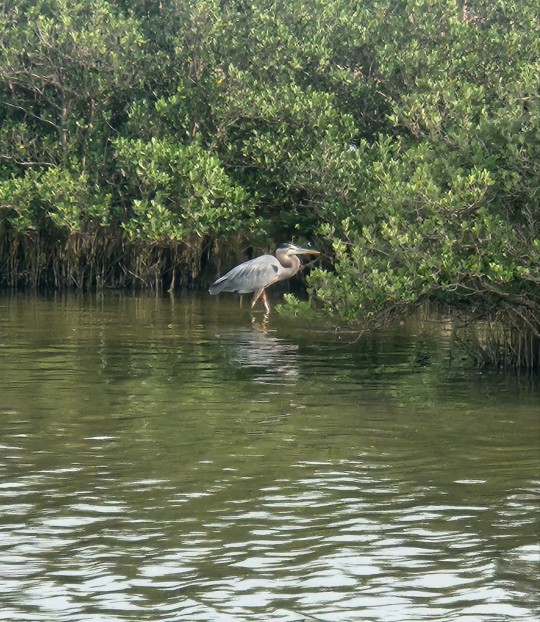

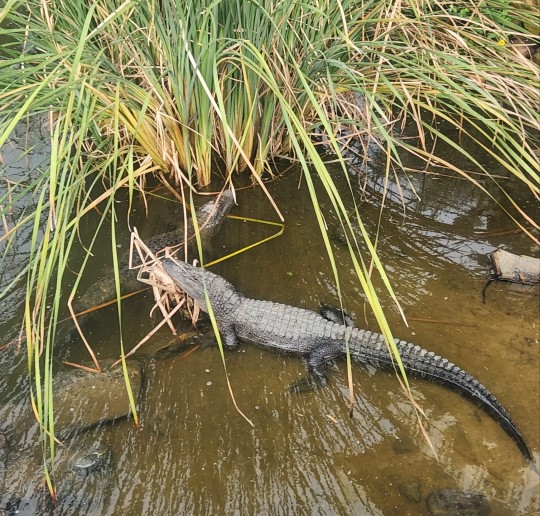
A couple days ago I went to a local nature center. I'll be making another post about some specific plant life, but this post is about the overall environment and some of the wild birds and sanctuaried alligators here. This very beautiful and unique place consists of about 50 acres of wetlands along the bay! It's possible that my Coahuiltecan ancestors migrated to this area depending on food availability throughout the seasons, for plant medicine, and for tool and art crafting materials like wetland grasses and reeds, bones, feathers, shells, and seeds
Pic 1 ~ An overall look at a section of the area, including the bay
2 ~ A wide expanse of Black Mangroves, an extremely vital tree to the ecosystem, and a very spiritual as well as medicinal botanical
3 ~ I'm not sure what this colorful dude's name is but I also see them often in my city! If someone could help me ID him, I'd appreciate it! <3
4 ~ White Ibis, preparing to fly off
5 ~ Big Padre!! A rescued 12' 7" gator, and his lovely wife, Lady Laguna!! I love them, relationship goals fr
6 ~ Some kind of blue Heron, though I'm unsure of the exact species. If anyone knows, I'd appreciate if you could help me ID him!
7 ~ Creepy front view of a Great Blue Heron staring at me
8 ~ A gator using a cattail stump as a pillow! 😭 Too cute not to share
#wetlands#swamp witch#ocean witch#spirituality#depop#environmental science#environmentalism#ecosystem#coastal birds#coastal ecosystem#bay area#south texas#south padre island#sea witchcraft#sea witch#bruja#eclectic witchcraft#ecletic witch#etsy#green witch#green witchcraft#latine#indigenous#heron#great blue heron#white ibis#alligator#black mangrove#sacred land#ancestor work
23 notes
·
View notes
Text

This majestic osprey is king of the beach in the Torrey Pines State Reserve in La Jolla, California! Resident birds include brown and white pelicans, plovers, American avocets, western sandpipers, willets, whimbrels, sanderlings, great egrets, and longbilled curlews.
youtube
#california#travel#beach#la jolla#north county san diego#southern california#san diego#youtube#socal#ocean#Osprey#Ospreys#Wildlife#Birdlife#Coastal Birds#Ecology#nature#Ecosystem#Nature Study#Marine Biology#Marine Life#Tidepools#Tide Pool#Youtube
6 notes
·
View notes
Text
World Dugong Day
Every year, on the 28th of May, it is celebrated the World Dugong Day! 🧜
Dugong is known as the sea cow (pic attached 🐮 - x). Why sea cow, you ask? These animals can be found in coastal environments feeding exclusively and extensively on seagrasses. The largest remaining population of Dugongs can be found in Australia (i), while the closest to the United Kingdom can be observed in the shallow waters of The Arabian Gulf (ii) 🌊
Why are dugongs important? 🧐
According to the Dugong & Seagrass Conservation Project (iii), dugongs contribute to maintaining balanced marine coastal environments, while also representing good indicators for local ecosystem health. Their presence is of course linked with seagrasses, which not only represents these herbivore mammals’ only source of food: seagrass sits at bottom of food chain in coastal environments (iv). Moreover, it provides important ecosystem services such as fish products, reduced erosion and flood protection (v). In other words, dugong presence is the manifestation of healthy ecosystem. Terrible news is: they are classified as vulnerable species (vi) 😰
Why are they declining? And how is climate change impacting their population? 😭
Dugongs are sensitive creatures not exempt from anthropogenic (modern age) disturbance. They have been largely hunted by humans for its meat, fat and oils, which caused significant population reduction (vi). Also, seagrass species are under extreme pressure due water quality variations largely driven by climate change (vii) and further human activity (viii). In addition, their slow reproduction rate and long life span (around 70 years) make them less resilient from not-environmentally friendly fishing practices (ix) 🎣
What can be done to support them? 💪
The Australian Great Barrier Reef and Marine Park Authority (i) provides the following recommendations:
1. Protect coastal habitats - Do not damage seagrass by dragging boats on underwater meadows and act against pollution, eutrophication and herbicide use deriving from land-based activities 🚜
2. Avoid use of mesh nets - Dugongs can get trapped in fishing nets 🥅
3. Boat responsibly - Dugongs are hard too spot while sitting on high speeding boats. Reduce speed while crossing shallow waters and seagrass meadows. If you spot one, it is likely it will not the only one in the area 🚢
4. Report - Just like for other sirenians, as well as cetaceans, it is essential to report injured/dead dugongs to local authorities ☎️
5. Donate - Dugong & Seagrass Conservation Project covers the conservation of dugongs and their associated seagrass ecosystems in eight countries in the Indo-Pacific region: Indonesia, Madagascar, Malaysia, Mozambique, Solomon Islands, Sri Lanka, Timor-Leste and Vanuatu. See more information here: https://www.dugongconservation.org/ 🙏
References:
i. https://www2.gbrmpa.gov.au/learn/animals/dugong#:~:text=Whether%20in%20protection%20areas%20or,flowing%20into%20creeks%20and%20rivers
ii. https://www.seaworldabudhabi.com/en/stories/meet-the-dugongs#:~:text=In%20the%20UAE%2C%20dugongs%20are,Marine%20Biosphere%20Reserve%20(MMBR)
iii. https://www.dugongconservation.org/about/about-dugongs-seagrass/
iv: https://education.nationalgeographic.org/resource/marine-food-chain/7th-grade/
v: https://www.ncbi.nlm.nih.gov/pmc/articles/PMC5061329/#:~:text=Seagrass%20ecosystems%20play%20a%20multi,erosion%20and%20protection%20against%20floods
vi: https://nc.iucnredlist.org/redlist/amazing-species/dugong-dugon/pdfs/original/dugong-dugon.pdf
vii: https://pubs.usgs.gov/publication/70204854#:~:text=A%20primary%20effect%20of%20increased,the%20patterns%20of%20sexual%20reproduction
viii: https://link.springer.com/chapter/10.1007/978-1-4020-2983-7_24#citeas
ix: https://www.dcceew.gov.au/sites/default/files/env/pages/0fcb6106-b4e3-4f9f-8d06-f6f94bea196b/files/north-report-card-dugong.pdf
x (picture): https://theconversation.com/dugongs-looking-to-the-gentle-sea-creatures-past-may-guard-its-future-122902
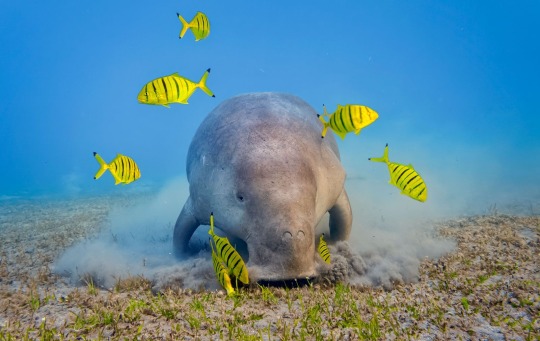
#dugongs#dugong#world dugong day#climate change#nature#sustainability#climate crisis#ecosystem#coastal#environment#environmental science#environmentalism#conservation#anthropocene#habitat#animals#sirens#sirenians
3 notes
·
View notes
Text

Logo & Branding for a solar-energy panels ☆
Get your creative & professional branding!💌
#solar energy#coastal#power#energy#ecofriendly#ecosystem#logo#business#artists on tumblr#entrepreneur#branding#creative#startup#identity#graphic design
9 notes
·
View notes
Text
youtube
Puffins: The Amazing Underwater Divers!
Did you know puffins can dive over 200 feet deep? Discover this and more about these fascinating sea birds!
Check out my other videos here: Animal Kingdom Animal Facts Animal Education
#Helpful Tips#Wild Wow Facts#Puffins#Underwater Diving#Wildlife Documentaries#Nature Films#Bird Watching#Marine Life#Animal Behavior#Puffin Facts#Puffin Habitat#Sea Birds#Ocean Exploration#Wildlife Conservation#Avian Species#Puffin Nesting#Bird Migration#Nature Education#Ocean Life#Coastal Ecosystems#Diving Birds#Puffin Feeding#Nature Lovers#Bird Enthusiasts#Environmental Awareness#Fun Facts About Puffins#Puffin Videos.#Youtube
0 notes
Text
Excerpt from this story from Inside Climate News:
The Constitutional Court of Ecuador ruled that coastal marine ecosystems have legal rights that must be protected, potentially requiring stricter limits on human activities like industrial fishing.
Those ecosystems, the court said, have a right to maintain their natural “life cycles, structure, functions and evolutionary processes” and the Ecuadorian government must adopt sufficient protective measures to ensure those “vital processes” persist.
Marine coastal ecosystems have “intrinsic value,” the court added, and Ecuador made a commitment in its constitution to “build a new form of citizen coexistence, in diversity and harmony with nature.”
Ecuador, in 2008, became the first country in the world to recognize in a national constitution that nature, similar to humans and corporations, has legal rights. More than a dozen other countries have through legislation or court rulings recognized that ecosystems or individual species have rights, including to live, persist and regenerate.
Until now, all of Ecuador’s Constitutional Court rulings regarding nature’s rights have involved ecosystems on land, mangroves and wild animals. Lawyers familiar with rights of nature jurisprudence say the coastal marine ecosystem case, released late last year, is a landmark decision that extends heightened protections to the country’s vast aquatic ecosystems.
Ecuador, which includes the Galapagos Islands, is home to hundreds of fish species, whales, sea turtles, dolphins, sharks, manta rays and corals.
111 notes
·
View notes
Text
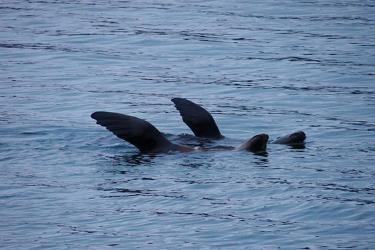
apparently sea lions will float on their backs w their flippers sticking out of the water in order to thermoregulate (real thin skin+a ton of veins there allowing for them to either warm up real quick in the sun or to cool down when held up into the wind). very cute
#i like the idea of coastal drakes doing smth somewhat similar by sticking their webbed hands+feet up in the air. though a lot less--#--efficient than sea lions by virtue of being cold blooded amphibians instead of mammals u know#this is a rough idea but mmmmmmaybe the reason why drakes have REMAINED amphibians despite millennia to evolve into--#--fish (in the case of coastal drakes) or reptiles (land drakes) is because theres this WALL preventing them. just a complete inability--#--to go that bit further because they are sophonts. rather than aided in evolution by outside influences (thule/the eldritch) as is the--#--case with every other sophont they are instead restricted. thus such extreme evolutionary lengths to better fit into their ecosystem--#--while still remaining within the constraints of Amphibian
2 notes
·
View notes